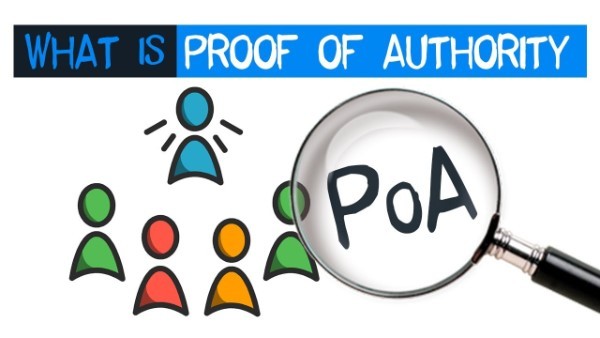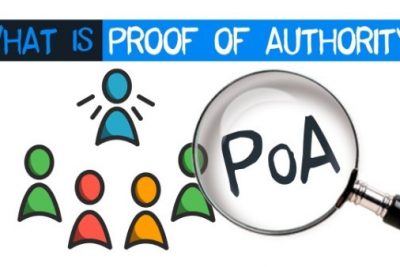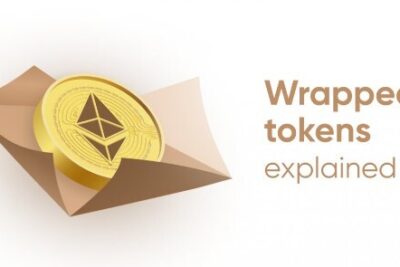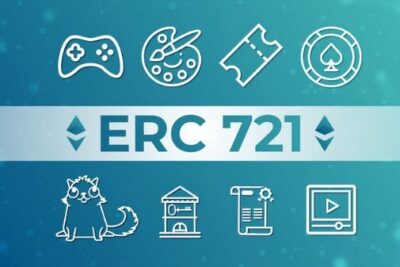

What Is Proof of Authority And What Does It Solves For Blockchain?
21 April 2022
Consensus processes on blockchain systems can be classified as permissionless (e.g., Ethereum, Bitcoin) or permissioned (eg Hyperledger, Ethereum Private). In contrast to permissionless blockchains, which allow anybody to become a node, permissioned blockchains have all nodes pre-selected. This enables the adoption of consensus algorithms with a high degree of scalability and bandwidth.
Along with well-known algorithms like Proof of Work and Proof of Stake, there are a variety of different consensus algorithms that provide alternate approaches for reaching consensus in a blockchain system.Proof-of-Authority (PoA) consensus is one of these forms of consensus that delivers great performance and fault tolerance. The term was coined in 2017 by Gavin Wood, co-founder of Ethereum and Parity Technologies.
So what is exactly Proof of Authority (PoA)? What problem does the PoA algorithm assist in resolving in the Blockchain space? What are the algorithm’s priorities and limitations? Let bePAY to demonstrate this in this excellent post.
- What Is Proof Of Authority?
- What Does Proof Of Authority Solve?
- How Does Proof Of Authority Work?
- Proof of Authority vs Proof of Stake Vs Proof of Work In Comparison
- FAQs About Proof Of Authority
- Wrapping Up
What is Proof Of Authority?
PoA is a reputation-based consensus method for blockchain networks that provides a realistic and efficient solution (private blockchain for instance). An early proponent of the word, ex-CTO of Ethereum, Gavin Wood, coined the phrase last year.
Rather than staking currency, block validators use their own reputation as a form of collateral in the PoA consensus mechanism. As a result, the validating nodes of PoA blockchains are chosen at random as trustworthy entities for the purpose of securing them.
Because of its reliance on a small number of block validators, the Proof of Authority paradigm is extremely scalable. Pre-processing verifies the blocks and transactions.

What is Proof Of Authority?
What Does Proof Of Authority Solve?
Due to the profitability and high cost of Proof of Work, Proof of Stake algorithms have become popular as a viable alternative to PoW. It is self-evident that PoS is a powerful tool:
- PoS enables validators to work with a greater financial incentive.
- PoS does not need a significant amount of processing work or specialized hardware.
- Additionally, PoS enables sharding, which enhances the future scalability of the blockchain network.
With all of these benefits, it’s unsurprising that Ethereum, the world’s second most popular blockchain network, is presently undergoing a Proof of Stake shift. However, PoS has a substantial disadvantage. PoS is predicated on the idea that people who have staked tokens in the network will be motivated to operate in the network’s best interests; otherwise, they risk losing their token share.
As a result, it appears plausible to infer that the more tokens a person has staked, the more motivated they are to ensure the network’s success. This assumption, however, does not account for the fact that, while identical shares may have the same monetary worth, they may not be equally appreciated by the holder.
This is one of the goals of Proof of Authority. Instead of concentrating on the economic worth of the token, the PoA algorithm focuses on network users determining their identity.

What Does PoA Resolve In Blockchain?
In the PoA system, validators are well-known entities who place their “reputation” on the top in order to validate blocks. This tweak to the PoS model removes the requirement to consider money disparities between validators and assures that all network members are equally incentivized to contribute to the network’s success. their sphere of influence.
>> Read also: Do You Know What Is Proof Of Stake – Ultimate Information For Newbies
How Does Proof Of Authority Work?
Validators utilize software to group transactions together. The procedure is automated, and validators are not required to watch their computers continually. This, however, demands that the computer (admin site) be kept in excellent working order.
How Do I Get Proof Of Authority? – To be chosen as a validator, a user must meet three fundamental requirements:
- The identification must be properly validated on the network, with the information in the public domain being cross-checked.
- It should not be simple to get the privilege to be chosen as a validator who is permitted to confirm earned and evaluated blocks (for example, a potential notary is required to obtain a state notarial license).
- The tests and methods for establishing authority should be completely consistent.
With the PoA method, individuals earn the privilege to become validators, providing them with an incentive to keep their newly acquired status. Validators are driven to maintain a normal transaction procedure in order to avoid jeopardizing their reputation. As a result, the majority of users cherish their hard-won status as a validator.

How Does Proof Of Authority Work?
Proof of Authority Use Cases
The Proof of Authority concept enables businesses to protect their anonymity while utilizing blockchain technology’s benefits.
The PoA consensus technique may be used in a number of situations and is considered a valuable alternative for logistical applications. For example, when it comes to supply chains, POA is seen as a practical and sensible approach.
Due to the low number of validators, PoA is most suited for enterprise-level networks such as blockchain consortia and other private networks that already have a certain amount of trust among their members. It’s telling that Hyperledger Besu, an Enterprise Ethereum implementation, has two PoA alternatives.
Testnets provide another compelling use case for authority proof. PoA consensus is useful for testing features before to publishing them on the mainnet. Three of Ethereum’s testnets, Kovan, Goerli, and Rinkeby, all implement Proof of Authority. Meanwhile, Polkadot, one of the most popular blockchain protocols today, started in beta last year as a PoA network before transitioning to a PoS network for its general release.

The Application Of Proof Authority Concensus
Proof of Authority is also an excellent choice for a sidechain, a sort of blockchain that runs in parallel to the parent blockchain and is connected to it by a two-way bridge. The POA Network is an example of this. It is a public Ethereum sidechain that relies on pre-selected validators whose identities are public and verifiable.
And then there’s VeChainThor, which is likely the most well-known public network to use PoA consensus. The network’s mission is to deliver enterprise solutions driven by blockchain technology.
>> Read Also: What Is VeChain And How Does VeChain Work?
Proof of Authority vs Proof of Stake Vs Proof of Work In Comparison
Proof of Authority Vs Proof of Work
Apart from lowering the power requirements for network maintenance, the Proof of Authority method streamlines the validation procedure. Additionally, the consensus offers a number of advantages that should be addressed.
There Is No Requirement For Complex Hardware
To complete the complicated mathematical operations required for verifying blocks, the PoW consensus method demands high-performance hardware. By contrast, the Proof of Authority vs Proof of Work in comparison does not need solving problems to maintain the nodes’ lasting connection. As a result, validators do not require specialized equipment to maintain the network.
Increased Transactional Volume
The Proof of Authority algorithm enables authorities to validate transactions more quickly. Due to the fact that blocks are created in a predictable order based on the number of validators, the blockchain has a greater transaction rate than PoW or PoS.

Poof Of Authority vs Other Algorithms
Tolerance For 51% Of Assaults
The PoA consensus is believed to be even more secure than the PoW consensus. This is because a person who generates 51% of the processing power cannot compromise the network.
Taking control of 51% of authorities that are not directly related is far more difficult. Additionally, nodes are pre-authenticated, and the network can omit a node from the validation process if it is unavailable.
>> Read also: What Is A 51% Attack & Its Effects On The Blockchain Network
Proof of Authority vs Proof of Stake
PoS can be an expensive and ineffective choice for certain organizations and corporations, and while PoA can be considered a kind of PoS, its performance and maintenance costs are far lower than those of any other private blockchain alternative.
When compared Proof of Authority vs Proof of Stake normal consensus, PoA has a benefit because block makers can be easily recognized, which increases responsibility, and because “target spacing” ensures predictability by enabling blocks to be given at defined time intervals.
To be effective, PoA is dependent on a number of factors, including the following: Validators provide authentic and accurate information about their identities; To mitigate the risk of malicious agents, money and personal reputation must be invested to ensure a long-term commitment; and The process of validator approval must be standardized, so that it is uniform for all candidates.
To assure the trustworthiness of new network users, thorough identity validation must occur, and the total procedure must be hard enough to prevent hostile agents while being easy enough that people desire to validate. At the heart of this system are validators, who use software to construct block transactions in an automated procedure that needs the authority node’s (maintainer’s) computer to be uncompromised.
In comparison to PoS, individuals become validators based on their reputation; as such, they are motivated to respect the authenticity of the transaction without jeopardizing their reputation. When it comes to incentives, PoA is preferable since it disregards an individual’s possessions and instead emphasizes their reputation.

PoA vs PoS
PoA vs PoW vs PoS
PoA is unworkable for declarative blockchains like Bitcoin and Ethereum, which include hundreds or even thousands of validating nodes. That is why network PoA often includes fewer validator nodes, reducing our centralized nature. Additionally, we are capable of giving higher-quality information in terms of surface positivity.
As with Proof of Stake, Proof of Authority does not need an exorbitant amount of computational startup time or equipment expertise. Additionally, network PoA generally selects executors with established reputations as beneficiaries, which means that obtaining that job is frequently out of reach for the average person.
Each type of work, whether PoW, PoS, or PoA, has its own set of advantages and disadvantages. We know that community cryptocurrencies prioritize decentralization and that PoA is a consensus method that trades off decentralization for great performance and scalability.
However, PoA is an intriguing technique that cannot be overlooked and is viewed as a viable new blockchain option for decentralized application blockchains.

PoA vs PoW vs PoS
FAQs About Proof Of Authority
How Do I Get Proof Of Authority?
A coherent PoA algorithm is dependent on the following if you would like to get proof of authority slots to become validators
- Individuals who are active and trustworthy (validators who must self-identify);
- The challenge of becoming a validator is that the applicant must be willing to pay money and risk his or her reputation. A rigorous approach minimizes the danger of picking suspect validators and fosters long-term commitment;
- Standard for Validator Approval: The mechanism for validator selection should be consistent across all applicants.
The reputation method is based on trust in the validator’s identity. It is not an easy task, and inexperienced players are eliminated. Finally, this assures that all validators follow the same protocol, ensuring the system’s integrity and dependability.
Is Proof of Authority Good?
Proof of Authority is one of the greatest consensus algorithms available for private blockchains today. That is because it is capable of achieving agreement while keeping some degree of network decentralisation. It may be a realistic option for businesses interested in using in-house blockchain technologies to boost productivity.

Is Proof of Authority Good?
Wrapping Up
There is no perfect process for achieving agreement — each of the existing ones has certain downsides. PoW meets scalability problems. While it is commonly known that the Bitcoin community values decentralization, PoA as a consensus method compromises decentralization in order to achieve high throughput and scalability.
The inherent characteristics of PoA systems stand in sharp contrast to how blockchains continue to operate. However, PoA is an outstanding technology that cannot be overlooked as a potential blockchain solution for private blockchain applications.
Ultimately, it is expected that the corporate sector will be the most receptive to PoA. While PoA-based algorithms are unlikely to ever be able to power large public platforms with hundreds or even millions of users, they are now excellent at creating small, focused networks customized to the demands of a small number of known stakeholders. That is where Proof of Authority truly shines and is most likely to have the most impact.

What Is Web 3.0 And How Does It Affect The Future?
16 March 2022











